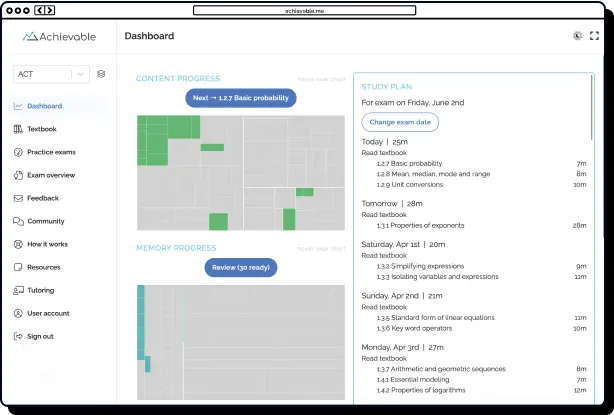
Analyzing tone and bias on the Praxis Reading test




A significant portion of the Praxis Core Reading exam focuses on identifying the author’s tone or viewpoint. Mastering the ability to detect tone and bias is critical for excelling in these types of Praxis exam questions. As part of effective Praxis test prep, developing these skills can greatly improve your performance on the reading section of the Praxis Core exam.
In this article, we’ll explore proven strategies for recognizing tone and bias on the Praxis Reading exam to help you get ready for success on test day. We’ll also present Praxis practice questions to demonstrate these concepts in action.

Identifying tone
Tone refers to the author’s attitude toward the subject matter they are discussing. People often get tone and mood confused, but here’s a quick way to distinguish the two: tone is how the author feels, and mood is how the writing is supposed to make the reader feel. Tone goes a long way in revealing the author’s stance on a particular subject, making it extremely useful not just for questions that ask about tone specifically, but also for questions that ask about the author’s intent. Some common tones include formal, informal, serious, humorous, sarcastic, optimistic, pessimistic, etc. Let’s go over some strategies to identify tone.
Diction
By far the most useful concept when identifying tone is diction. Diction is the author’s word choice. Pay special attention to the words the author uses, and try to identify the emotions those words are meant to evoke in the reader.
Also, pay attention to the formality of the words the author is using; are they using colloquial language, or do they sound very technical or businesslike? Does the passage contain humor? If so, is it the type of humor you would hear your friends using in casual conversation, or is it the type of joke you’d expect your manager to crack in a work meeting? Is the humor present in the whole passage, or just in bits and pieces of it?
This sounds like a lot to have to think about on a timed test, but in reality, your brain is used to answering these questions on its own without prompting. Try to follow these best practices when answering passage questions:
- Read the question
- Read the passage
- Predict the answer (what your brain thinks it is)
- Match your predicted answer to the answer choices. If it isn't exactly what you predicted, it will be a synonym or a rephrasing of it.
Sentence Structure
Another strategy to identify tone is to pay attention to the sentence structure, specifically sentence complexity and punctuation. The use of more exclamation points may imply a less neutral tone, and a passage with many complex sentences might have a more formal tone. Authors who write more emotional works will often intentionally play with the sentence structure, while authors who attempt to write more rationally based works will use whatever structure suits their needs at that point in the passage. Look for changes in sentence structure that draw your attention, because the author may have done this on purpose.
Example Praxis Reading question on tone
Below is an example question from Achievable’s Praxis Reading question bank that asks respondents to identify the difference in tone between two questions:
Passage A
Recycling is an important step on the journey towards a sustainable planetary environment. It diverts waste from landfills and reduces the need for new ones. Less waste in landfills also means that less methane and carbon dioxide are released into the atmosphere. Many recycled products are less expensive and use less energy than those made from non-renewable resources. One success story is wood recycling. Waste wood can become flooring, construction materials, garden mulch, pasteboard furniture, and paper products. Fiberboard, a recycled wood product, can replace plastic, further reducing environmental harm.
Passage B
Plastic recycling doesn’t work. For one thing, the process emits greenhouse gases into the atmosphere. Less than ten percent of all plastic ever produced has been recycled, and new products continue to proliferate. Also, many products are packaged in multi-layered products in which plastic has been fused with paper or aluminum foil and can’t be recycled. Unfortunately, the plastics industry has led people to believe that plastic recycling is an effective tool with which to fight climate change, even though most of it simply clogs the recycling system and makes it less effective than it already is.
Which statement best expresses the differences in tone and attitude between the two passages?
- Passage A is optimistic and forward-looking, whereas Passage B is pessimistic and concerned with a current problem.
- Passage A tells a recycling success story, and Passage B argues that recycling will never work in the long run.
- Passage A is optimistic, yet cautious, and Passage B is pessimistic and subjective.
- Passage A is optimistic, yet subjective, and Passage B is pessimistic and objective.
- Passage A focuses on recycling successes, whereas Passage B only looks at one industry’s success story: plastic recycling.
Correct Answer: B. Passage A is optimistic and forward-looking, whereas Passage B is pessimistic and concerned with a current problem.
Passage A focuses on a recycling success story and looks forward to more success, while Passage B discusses the failure of plastic recycling and expresses pessimism about its future. The tone of Passage A is more formal and positive, with the author bolstering their argument in favor of recycling through real-life examples.
Passage B also includes examples and objective reasoning, but is more conversational and dour in tone. Passage B’s author uses striking images and loaded language to make their point, choosing words like “fused” and “clogs,” highlighting the urgency of the issue. Passage A’s sentence structure is consistent and short, while Passage B includes a mixture of short and long sentences to emphasize different points. While both passages offer legitimate arguments backed by evidence, the style, tone, and conclusions of each differ greatly.

Bias
Bias is a word we hear a lot now. People accuse the media of being biased; they accuse each other of being biased, etc. However, the technical definition of bias is a disproportionate prejudice against or in favor of something. Analyzing the author’s bias can often immediately reveal their intentions behind creating a work, which is extremely useful for the Praxis test. We’ll go over two common ways of detecting bias in literature.
Diction
Once again, we turn to diction, but for the Praxis Core, the focus becomes even more precise. This stage in your Praxis Reading test prep emphasizes identifying loaded language, or specific words or phrases that carry strong connotations and can reveal the author’s attitude. Encountering loaded language in Praxis exam passages is a valuable skill, as recognizing these subtle clues can help you answer Praxis sample questions regarding tone and bias. If an author uses words with predominantly negative connotations while discussing a topic, it’s a strong indicator that they are biased against that subject. Conversely, if the language used has consistently positive undertones, it’s likely the author holds a favorable view. Sharpening your awareness of loaded language will boost your ability to analyze reading selections effectively during your Praxis test preparation.
Stereotypes and generalizations
Another way to identify bias is to look for stereotypes and generalizations. Generally, if the author is making a generalization about a topic without stating that they’re making a generalization, they’re biased about that topic. In addition, using stereotypes is another way you can identify bias, since stereotypes are just another form of generalization. A simple test to see if the author is generalizing or stereotyping is to see if they are making sweeping statements that apply broadly, without a qualifier, and with little, poor, or no evidence.
Example Praxis Reading question on bias
Below is an example Praxis Reading question that asks readers to infer how two characters feel about their family heritage:
This passage is from “Middlemarch” by George Eliot:
Miss Brooke had that kind of beauty which seems to be thrown into relief by poor dress. Her hand and wrist were so finely formed that she could wear sleeves not less bare of style than those in which the Blessed Virgin appeared to Italian painters; and her profile as well as her stature and bearing seemed to gain the more dignity from her plain garments, which by the side of provincial fashion gave her the impressiveness of a fine quotation from the Bible,—or from one of our elder poets,—in a paragraph of to-day’s newspaper. She was usually spoken of as being remarkably clever, but with the addition that her sister Celia had more common-sense. Nevertheless, Celia wore scarcely more trimmings; and it was only to close observers that her dress differed from her sister’s, and had a shade of coquetry in its arrangements; for Miss Brooke’s plain dressing was due to mixed conditions, in most of which her sister shared. The pride of being ladies had something to do with it: the Brooke connections, though not exactly aristocratic, were unquestionably “good:” if you inquired backward for a generation or two, you would not find any yard-measuring or parcel-tying forefathers—anything lower than an admiral or a clergyman; and there was even an ancestor discernible as a Puritan gentleman who served under Cromwell, but afterwards conformed, and managed to come out of all political troubles as the proprietor of a respectable family estate. Young women of such birth, living in a quiet country-house, and attending a village church hardly larger than a parlor, naturally regarded frippery as the ambition of a huckster’s daughter.
The allusion to “yard-measuring or parcel-tying forefathers.” suggests that:
- Miss Brooke and Celia were proud that their ancestors did not have to work for a living.
- Yard-measuring and parcel-tying are not respectable occupations.
- Miss Brooke and Celia are grateful that their family tree only contains sea-faring folk.
- Miss Brooke and Celia appreciate their family’s working-class background.
- Miss Brooke and Celia respect people who must work to earn their living.
Correct Answer: A. Miss Brooke and Celia were proud that their ancestors did not have to work for a living. The narrator presents two women who, while not coming from great wealth, are aware of the high professional and social statuses of their past family members. The passage juxtaposes “yard-measuring or parcel-tying” occupations with the more genteel ones of clergyman and naval officer. The two sisters share a bias toward the upper class, and believe that expressing a plain outward appearance sets them apart from other women who engage in “frippery,” or frivolity.
Conclusion
While the Praxis Reading exam can be demanding, using these targeted Praxis Core strategies will help you navigate challenging questions more effectively. A crucial component of Praxis test prep is completing Praxis practice exams and carefully reviewing Praxis sample questions to understand where you can improve. Always make sure you are using high-quality, accurate Praxis test materials throughout your studying. With sustained effort and effective Praxis exam preparation, you’re likely to achieve an impressive score when you receive your results.

